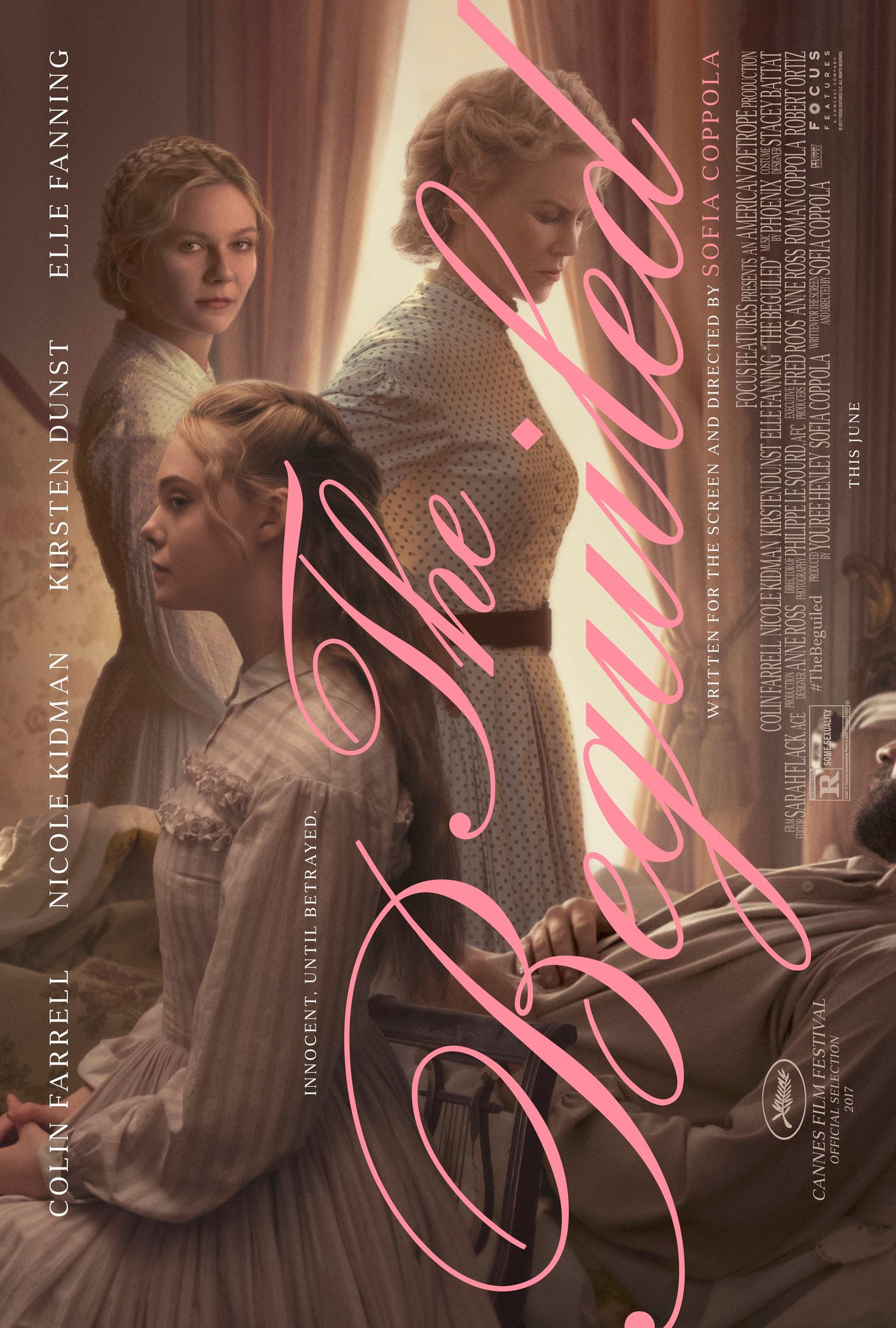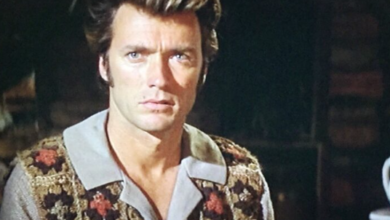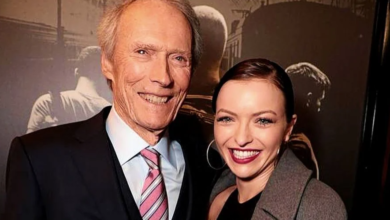Sofia Coppola’s Remake Improved on This Clint Eastwood Western
Sofia Coppola's adaptation takes a much more entertaining approach than the original 1971 Western.

THE BIG PICTURE
- Sofia Coppola changes the perspective of The Beguiled to explore the complexities of 19th-century gender dynamics.
- Coppola gives more depth and motivation to the female characters, unlike the original film where they are portrayed as lustful women.
- The complexity of Colin Farrell’s character makes the central incident more interesting, and Coppola adds a touch of humor to the film.
The Western has been one of the most popular American film genres since the silent era of cinema. Even if 1939’s Stagecoach is credited with creating the modern version of the genre, Westerns existed before John Ford’s classic, and they have evolved significantly in the eight decades that followed. Many of these stories have become timeless, and remaking a beloved Western can sometimes create surprising results; for example, James Mangold’s 2007 remake of 3:10 to Yuma added more character depth to the 1957 original. While some Westerns don’t necessitate a remake, Don Siegel’s 1971 Clint Eastwood Western The Beguiled was one that was absolutely necessary. By changing the perspective of the story altogether in her 2017 remake, Sofia Coppola fixed the flaws in the original source material and turned a relatively disposable thriller into a modern classic about the complexities of 19th-century gender dynamics.

The Beguiled
The unexpected arrival of a wounded Union soldier at a girls school in Virginia during the American Civil War leads to jealousy and betrayal.
What Does Sofia Coppola Add to ‘The Beguiled’s Characters?
Both Siegel and Coppolas’ versions of The Beguiled are based on the 1966 novel of the same name by Thomas P. Cullinan. The original film follows the wounded Union soldier John McBurney (Clint Eastwood), who escapes from the perils of battle to find shelter at the Miss Martha Farnsworth Seminary for Young Ladies in the middle of Mississippi. It’s far away from the conflict itself, and the all-female residents of the school are forced to choose what to do with this enigmatic stranger. While some of the residents like 12-year-old Amy (Pamelyn Ferdin) and the schoolteacher Edwina Dabney (Elizabeth Hartman) believe that it is their duty to help an innocent life, no matter which flag he fought for, the strict headmistress Martha Farnsworth (Geraldine Page) insists that a man will only end up causing problems within their secluded learning environment.
While Don Siegel may have been attempting to reflect the restrictive gender dynamics of the era, the depiction of Farnsworth as a hardline man-hater obsessed with castration (and McBurney as a completely innocent bystander) comes off as incredibly problematic. Although Siegel is certainly one of the great filmmakers of his time (responsible for classics like Invasion of the Body Snatchers and Dirty Harry), he’s treating a very complex novel as the inspiration for a thriller where an innocent man is preyed upon by a group of lustful women. Comparatively, Sofia Coppola uses the story to mine a different type of tension. Instead of making a thriller, Coppola turns the concept of one man in the company of five women into a fun, occasionally campy melodrama.

Sofia Coppola’s version tells the same exact story, but the perspective is changed by giving more insight into how Miss Farnsworth’s (Nicole Kidman) school operated prior to the arrival of McBurney (Colin Farrell). It’s revealed that since the beginning of the war, many of the teachers and students have abandoned the school out of fear of invasion, as they’ve heard of the Union Army’s “total war” strategy. This presents the plight of Farnsworth in a much more sympathetic light, and it also gives more justification for both Amy’s (Oona Laurence) and Edwinas’ (Kirsten Dunst) motivations.
Amy is left without many other girls to interact with, and thus has become more naive about the kindness of strangers; Edwina is left feeling purposeless with fewer students to watch over and seeks the fulfillment of having another adult around. If the arrival of Eastwood’s McBurney was met with nothing but contempt by the school’s residents, the emergence of Farrell’s McBurney at least presents an open debate among the girls. Coppola doesn’t paint them all in the same light, as she’s known for the complexity that she can bring to her female characters. Miss Farnsworth, Edwina, Amy, and the other students Alicia (Elle Fanning) and Jane (Angourie Rice) have different expectations of McBurney’s motivations based on their own (in some cases limited) interaction with men. It’s not just a timely update; seeing the conflicts and discussions between five generations of women is far more interesting than watching a grizzled Eastwood get spooked out every few moments by a creepy woman.
What Does Sofia Coppola’s ‘The Beguiled’ Change Compared to the Clint Eastwood Original?
While Sofia Coppola’s The Beguiled is decidedly told from the female perspective, it doesn’t mean that McBurney is depicted as a mustache-twirling villain. One of the original film’s flaws is that, despite being wounded and seemingly defenseless, Clint Eastwood looked cooler than ever. Comparatively, Farrell actually showed that this is a grizzled soldier who has been dealing with the perils of combat and is in need of rest. Even some of his objectionable behavior has some motivation behind it; he’s been fighting for his country for months without proper shelter or nutrients, and he’s prone to making rash decisions out of desperation. In fact, the kindness he shows Amy at the beginning when he encounters her on the edge of the schoolyard is completely genuine.
The complexity with which McBurney is depicted makes the central inciting incident more interesting. In the original film, McBurney learns of the women’s intention to harm him after he resists the sexual impulses of Miss Farnsworth herself. It’s an inherently sexist notion; Farnsworth only proclaims that separation is needed because of some buried sexual desire. In Coppola’s version, it’s a combination of McBurney’s affair with Abigail and how he takes advantage of Amy that drives the women to collectively agree that he no longer has a place in their community.
Coppola also understands that at the end of the day, The Beguiled is a melodrama. After realizing they cannot physically overpower McBurney, the women decide to poison him with mushrooms that they serve during an elegant dinner. This is a jump scare in Siegel’s version, but Coppola understands how silly it really is. There is a sickly tension that comes from the pivotal final meal in the film, and it’s almost comical to watch a rugged Farrell thank his hosts for a meal that he doesn’t realize will be his last.
As with any Sofia Coppola movie, The Beguiled is decked out with gorgeous production design, picturesque framing, and elegant costumes. It’s not necessarily a perfect adaptation; neither film truly reckons with the reality that as Southerners during the Civil War, Farnsworth and her companions would have been slave owners. Perhaps an even better remake will emerge at some point that balances the point of view, but as it stands, Coppola’s version represents a step in the right direction.
Sofia Coppola’s The Beguiled is available to stream on Netflix in the U.S.






